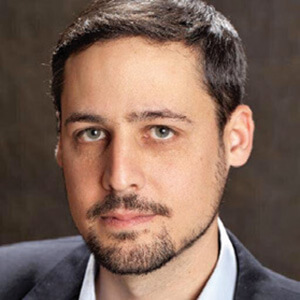
Within the next several years, Holocaust remembrance will enter into a challenging new phase: perpetuating the memory of one of the most heinous crimes in human history—and certainly, against the Jewish people—without any firsthand witnesses.
I attended the March of the Living in Poland last week and hosted the JNS official live broadcast. The annual event is without a doubt one of the most powerful and important organized experiences to instill both Jewish identity and Jewish unity.
Following the march, I was asked by many about the most powerful part of the visit. For me, it was simple: interviewing nearly 10 Holocaust survivors on the haunting grounds of the Auschwitz concentration camp and the Birkenau extermination camp, where more than 2 million Jews were murdered by the Nazi regime.
These survivors who had the courage to come back to the scene of horrors to share their stories with the next generation of Jews were beyond brave. Hearing the details of their stories firsthand, but even more than that—getting a glimpse into the memories that could be seen in their eyes—is what will remain so haunting … and so lasting.
A look into the eyes of a Holocaust survivor retelling stories of tragedy and survival on the grounds of Auschwitz-Birkenau gave me greater insight than any words I heard or feelings I could ever conjure.
The survivors were in their mid-80s to mid-90s. The opportunities to hear these stories, related directly by those who experienced them, are becoming more precious as they become more limited. Soon, within one generation, they will become a page in Jewish history.
And yet, as anti-Semitism again rears its ugly head across Europe, in the United States and even in Israel, the lessons of the Holocaust remain as important, if not more important, than ever.
The challenge for organizations like March of the Living, Yad Vashem and others will be how to increase real knowledge and deep understanding about what happened during the years of World War II without the talebearers of those horrors.
One model may come from the Jewish community itself: within the Chabad-Lubavitch movement.
With the passing of the seventh Lubavitcher Rebbe, Rabbi Menachem Mendel Schneerson, in June 1994, a dynastic movement that had spanned generations lacked a chasidic master at its head for the first time. And yet, Chabad today is as large and successful as ever.
The powerful spread of Chabad emissaries to all parts of the globe followed the model envisioned and set up by the Rebbe himself: to send those educated in the teachings and practices of Judaism in general and Chabad in particular, to carry a lantern of light kindled by the Rebbe himself.
The Rebbe was the high-quality source of this light, plugged in directly to the teachings and understandings of the original chasidic masters. Anyone who met him consistently noted the power that could be felt by looking the Rebbe directly in the eyes. It was as if his blue eyes could see into the soul of whoever stood or sat in front of him.
The Rebbe seemed to realize that his torch would not be passed to a single leader. Rather, if he could pass a portion of his light to thousands of others and send them to Jewish communities around the world, the light would be magnified exponentially. What might be suffered by a diminishing concentration of light could be made up for in great quantity. Local Chabad leaders—now numbering in the thousands—would shine as much light as possible into locations far and wide. Lighting a new candle never diminishes the light of the candle it’s lit from. Together, these emissaries now spread more light than a single Rebbe ever could.
As Holocaust survivors become fewer in number, there is no choice but to pass the torch to present and future generations that will perpetuate their stories, memories, teachings and understandings.
As Elie Wiesel famously stated, “When you listen to a witness, you become a witness.”
Inasmuch as that is one of the most important messages you can give to someone who hears directly from a witness, it can only, of course, be partially true. Despite my speaking to many Holocaust survivors, learning as much as I can about the sophisticated details of the Nazi’s Final Solution and being the grandson of Holocaust victims who survived the tortures of Polish labor and death camps, no one standing before me who hears my explanation of events will ever see in my eyes what I could see in theirs.
Nonetheless, if thousands of second-, third- and now fourth-generation descendants of survivors take the torch from those who survived through great courage and strength—with a true commitment and determination to sharing the light of our brave predecessors—we can succeed in taking the remembrance of the Holocaust and its lessons to even greater distances in the years to come.
By Alex Traiman
Alex Traiman is managing director and Jerusalem bureau chief of Jewish News Syndicate.









